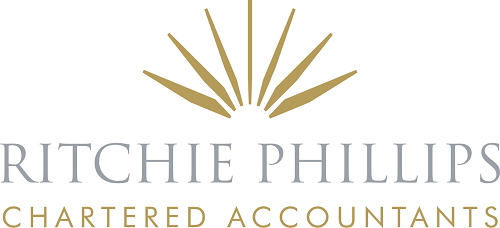When it comes to maximising your wealth and minimising your potential tax liability, there are a number of tax efficient options and schemes that you may want to consider. The right choice for you will depend on a variety of factors including your reason for investing, the amount of your investment and your capacity for risk. In this post we look at three of the most common methods.

1 Individual Savings Accounts (ISAs)
Individual Savings Accounts, or ISAs, are still a popular and effective choice which remain widely available.
They provide a tax-efficient way of investing because returns (such as interest, or capital gains) are paid tax-free. However, there is a limit to how much money you can put into an ISA in each tax year (currently £20,000), which is called the ‘ISA allowance’.
There are a number of different types of ISA, the most common of which include:
Cash ISAs
Cash ISAs come in different shapes and sizes and include instant access, regular savers and fixed-rate deals.
Stocks and shares ISAs
These are usually managed by a broker or fund manager and they allow you to invest in shares in individual companies, investment funds and bonds. Stocks and shares ISAs carry more risk than a cash ISA and you may get back less than you invested. However, they can still be an effective savings vehicle and shouldn’t be ruled out but you take professional advice before proceeding.
Innovative finance ISAs
These rely on peer-to-peer (P2P) or crowdfunding lending platforms. The peer-to-peer lending matches investors with borrowers (normally new businesses or property developers). The potential rates of interest can be high but so can the risks.
Junior ISAs
These are a great way to save for your child and allow you to invest up to £4,368 (2019/20) per year per any child under 18. This is in addition to your own adult allowance. Your child (not you) can then access the money when they’re 18.
If you’ve already opened a child trust fund (CTF) for your child, you can now transfer it to a junior ISA.
Help to Buy ISA
A Help to Buy ISA is designed to help you save for a mortgage deposit to buy a home. To qualify you must be classified as a first-time buyer and not own a property anywhere in the world.
The government will top up any contributions you make by 25%, up to the contribution limit of £12,000. This means you can potentially receive up to a maximum of £3,000 from the government.
You can start off your ISA with an initial deposit of up to £1,000 which qualifies for the 25% contribution from the government and they are available to each first-time buyer, not each home meaning a potential £6,000 contribution towards your deposit. However, they will not be available to after 30 November 2019.
Lifetime ISAs
This type of ISA is available for anyone aged between 18 and 40. You can put in up to £4,000 each year, until you’re 50. The government will add a 25% bonus to your savings, up to a maximum of £1,000 per year.
You can use a Lifetime ISA to buy your first home or save for later life but when you turn 50, you won’t be able to pay in it or earn the 25% bonus.

2 Pensions
Pension contributions remain a tax effective way of saving for your future and potentially minimising your tax liability. We have written a separate post about how to make the most of your pension contributions which can be found here..
3 Venture capital schemes
For more adventurous or philanthropic investor, there a number of tax efficient venture capital schemes available. Again, whether these are suitable will depend on the individual schemes, the amount to be invested and your aversion to risk.
Enterprise Investment Scheme (EIS)
EIS gives you tax relief for investing in new shares in qualifying unquoted trading companies. The tax incentives for investing in companies qualifying for EIS relief are intended to compensate for the high risk of failure.
The tax reliefs are:
- EIS income tax relief at 30% on up to £1million invested in 2018/19 provided the shares are held for at least three years.
- This limit increases to £2million for “knowledge intensive” companies.
- The possibility of carrying back the tax relief to the previous tax year.
- Further tax relief if the investment is disposed of at a loss or the company fails.
- Capital gains on EIS qualifying shares escape capital gains tax if the investment is held for three years.
- Capital gains of any size from the disposal of any assets can be deferred by reinvesting into EIS qualifying shares, providing reinvestment is made in the period one year before and three years after the date of disposal. The gains deferred become chargeable when the shares which qualify for EIS relief are sold.
In a climate of increasing tax rates, you will need to consider whether it is in your best interests to defer a capital gain currently taxable at up to 28% to a later tax year when an increased tax rate might apply.
Seed Enterprise Investment Scheme (SEIS)
SEIS was introduced for shares issued in small start up companies less than two years old.
The tax reliefs are:
- SEIS income tax relief at 50% on amounts invested up to £100,000 provided the shares are held for at least three years.
- The possibility of carrying back the tax relief to the previous tax year.
- Capital gains on SEIS investments escape capital gains tax if the investment is held for three years.
- Further tax relief if the investment is disposed of at a loss or the company fails.
- Capital gains on the disposal of any asset can be made 50% exempt by reinvesting the gain in qualifying SEIS shares provided the investment is made in the same tax year as the disposal.
The potential for 50% tax relief (or up to 78% tax relief if you have realised capital gains in the current year) should make SEIS attractive to individuals who wish to back potentially high growth businesses in the UK.
Venture Capital Trusts (VCTs)
VCTs are quoted investment trusts that invest in a range of small trading companies.
The tax reliefs are:
- Income tax relief at 30% on up to £200,000 invested in a tax year.
- No capital gains tax on disposal of the shares in a VCT if the shares are retained for five years.
- Dividends are tax free.
The tax incentives are again intended to compensate for the high risk of failure.
Investment risks
It is important to remember that EIS, SEIS and VCTs are all high risk investments, highly illiquid and difficult to realise other than in accordance with the intended exit route, if indeed one is available or permitted at the time of investment.
Do you need help with your tax efficient investments?
If you are considering investing, we always recommend you take professional advice. You can contact a member of our team today on 020 3195 1300.
